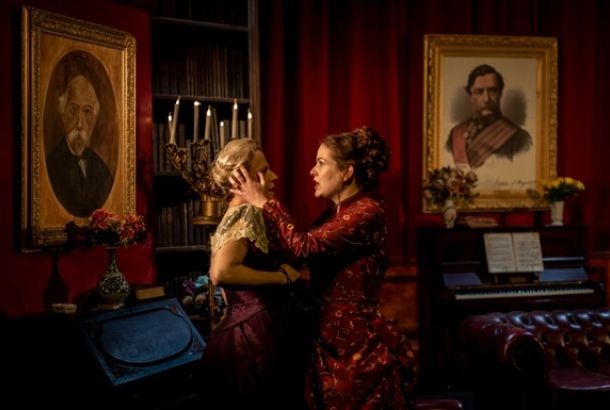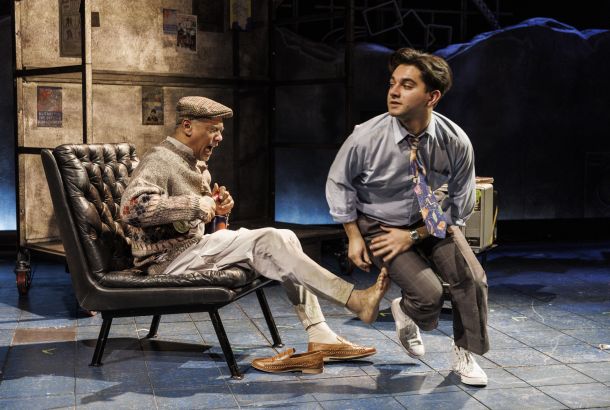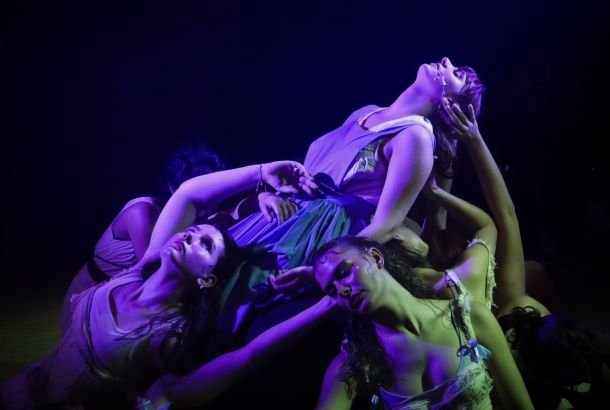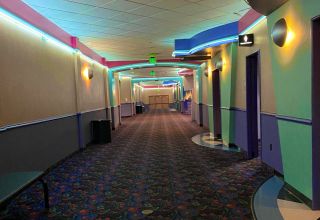Review: The House of Bernarda Alba
Federico García Lorca tells the tale of five daughters and their tyrannical mother, Bernarda, who relentlessly prioritises her reputation over her daughters’ wellbeing and her own emotions. The play is set in 1930s Spain, in a small Andalusian village where everyone knows everyone’s whereabouts and wrongdoings, on the day of the funeral of Alba’s second husband.
The play opens with the maids walking around exchanging angry comments about their boss. The house, in this production, consists of a circle of six chairs. A striking feature of this production is the diverse cast: one of the maids and two of the daughters are hard of hearing, and another is a British Sign Language interpreter; this feature is also written seamlessly into the characters’ speech, with Bernarda often ordering the maid to “sign” for her. The setting is reflective of the oppressive nature of the house — La Poncia, the most outspoken maid and closest out of them to the family, refers to the house as “her little empire” that “she doesn’t want anyone else to see.”
The maids set the tone of the play: by the time the Alba family arrives, the audience has formed an opinion of Bernarda’s character and is eager to see what this domineering is like. As the mourners arrive, there is a bright ray of light as if to precede the matriarch’s arrival to her empire. Bernarda is a small yet intimidating character whose first word onstage is an order: a foreshadowing feature that is very telling of her role in the play. It is interesting to note the difference in relationship between La Poncia and Bernarda once Bernarda is onstage: the two characters exchange gossip jokingly about the neighbours, and we see that La Poncia also plays the role of mediator and advisor. However, the impersonal employee-employer relationship is reinstated when La Poncia dares to disagree with Bernarda: “You’re impossible to talk to. Do we or do we not trust each other?” “We do not. You work for me and that is all.”
Lorca has written in and omitted features that develop the characters and build tension among them; these features were brought to the stage seamlessly by the director Jenny Sealey. Adela, the youngest daughter who is the most vocally opposed to the 8 years of mourning that have been imposed upon them, is the only character to break free of the monochrome dress code and wear a green dress, which is a foreshadowing sign of jealousy and a physical sign of her rebellion. Maria Josefa, Bernarda’s mother, is a symbol of all of the girls’ desire to be free; she escapes the room she is constantly locked in and declares her plan to run away to the sea to get married. Later in the play, she is a figure of brutal honesty as she says “Pepe El Romano [the love interest of the daughters and fiancée of one of them] is a giant; you all want him,” despite only three of them having declared a desire to be with him. The lack of a male cast member builds the tension among the women; having one prominent love interest allows their love to manifest in different forms: due to claustrophobia, loneliness, self-deprecation and lust.
The context of the play, when considered with reference to the characters and dynamics, is very interesting. Bernarda’s tyrannical nature foreshadows the dictatorship that Spain would live under for 36 years, with a desire to keep everything uniform and without any dissent from the given orders. However, the reversal in gender roles is significant. Bernarda, rather than feeling empowered as a matriarchal head of the house, says her hard work is due to “[toiling] like a man.” The stark difference in reactions to domestic violence by males and females was also made clear when the audience was amused by La Poncia affirming that “it’s true [she] used to beat [her husband].” This proud reaction from La Poncia may have been due to the fact that she resented having had her body taken advantage of by Bernarda’s late husband; both incidents display another facet of the toxic relationship between men and women in this play.
The House of Bernarda Alba is a revealing, entertaining and moving play that boldly shows the different types of women going through life, with one overarching characteristic: survival instincts in a small, oppressive, 20th century Spanish village.
The House of Bernarda Alba, a Royal Exchange Theatre and Graeae Theatre Company co-production, is at the Royal Exchange Theatre until the 25th of February.







